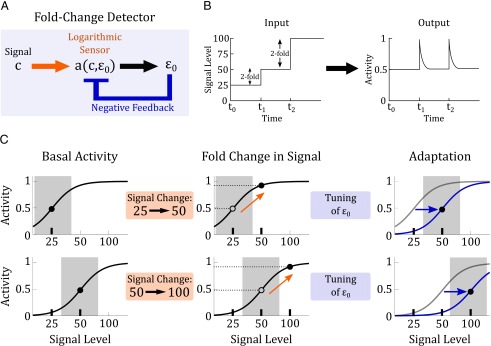Fig. 4.
Logarithmic-feedback circuit. (A) A logarithmic sensor can produce fold-change detection when coupled with negative feedback. In our model, the logarithmic sensor is an allosteric protein and the feedback comes from downstream modulation of an allosteric effector. (B) In fold-change detection a step increase in signal from 25 to 50, or from 50 to 100, will produce identical outputs. (C) An illustration of how the logarithmic-feedback circuit can produce fold-change detection. In the upper row, a logarithmic sensor experiences a twofold change in signal from 25 to 50. This stimulus produces a change in the sensor’s activity (orange arrow). The change in activity turns on downstream feedback which allosterically tunes the activation curve on a logarithmic scale (blue arrow), returning the sensor’s activity to its basal level. In the lower row, the same sensor now experiences another twofold change in signal, from 50 to 100. Despite the different in signal magnitude, this twofold change produces a change in activity that is identical to the previous one (dashed lines). Feedback will eventually takes effect and the system will return again to its basal level of activity.

